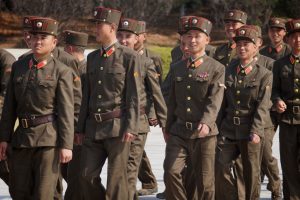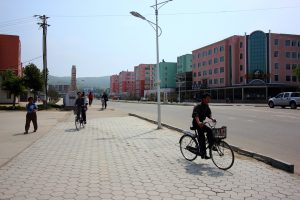If you have been to Pyongyang in the last few years it is more than likely that you would have seen signs for KoryoLink, who are the mobile phone provider in North Korea. But despite KoryoLink being the main provider, in some respects they are not a state monopoly and mobile phone services in North Korea are a little more complicated.
 The DPRK strangely actually has 3 networks. I will keep it as simple as possible. In “mainland” DPRK there is KoryoLink who provide 3G and have the monopoly on foreign users. They have been in the country about 5 years, but before KoryoLink there was Kumsan, a domestic company that largely still has better nationwide coverage than KoryoLink. Kumsan were also the original network before cellphones were banned, allegedly after an assassination attempt on the DPRK leadership. During the banned period cellphones were not available for regular citizens, but the Kumsan network was still used for the important folks. These networks now kind of co-exist and if you are out of Pyongyang your phone will often switch to this network, or to its 2G, or Edge.
The DPRK strangely actually has 3 networks. I will keep it as simple as possible. In “mainland” DPRK there is KoryoLink who provide 3G and have the monopoly on foreign users. They have been in the country about 5 years, but before KoryoLink there was Kumsan, a domestic company that largely still has better nationwide coverage than KoryoLink. Kumsan were also the original network before cellphones were banned, allegedly after an assassination attempt on the DPRK leadership. During the banned period cellphones were not available for regular citizens, but the Kumsan network was still used for the important folks. These networks now kind of co-exist and if you are out of Pyongyang your phone will often switch to this network, or to its 2G, or Edge.
Prices for KoryoLink start at around $200/250 USD just to get set up.You then have to buy data on top of this.
But this in itself does not explain the whole picture on how many networks there are in the “mainland”. Whilst foreign businesses and expats in North Korea are now permitted to have cell phones, and cell phones are now a big deal for Pyongyangers, they actually exist on separate networks, so our YPT phone can access the internet, and can call other foreigners, we cant call locals, nor access the DPRK intranet. And locals can phone locals, and access intranet, but can’t phone us, nor access the world wide web! Following so far?

So when I say North Korean mainland, our meaning is anywhere, but the Rason SEZ. In Rason they have a third major network run by Thai company The Loxely Pacific Company that does not work with with the other two. Cell phone coverage never reached Rason where in
reality, a lot of the region can still pick up Chinese networks, so they built their own!
And if you think this is confusing I did not even begin to get onto the fixed-line networks, which again would require a whole article!
So 3G in Rason has now been implemented from 2015 with a SIM card costing CNY 900 ($130) for the SIM card alone, not including the monthly fees that would follow, and alas no option for an iPhone. Monthly data and line usage fees are then also far from cheap depending on the package you choose.
So that’s a brief introduction into the mobile network of North Korea. Next stop fixed line….






